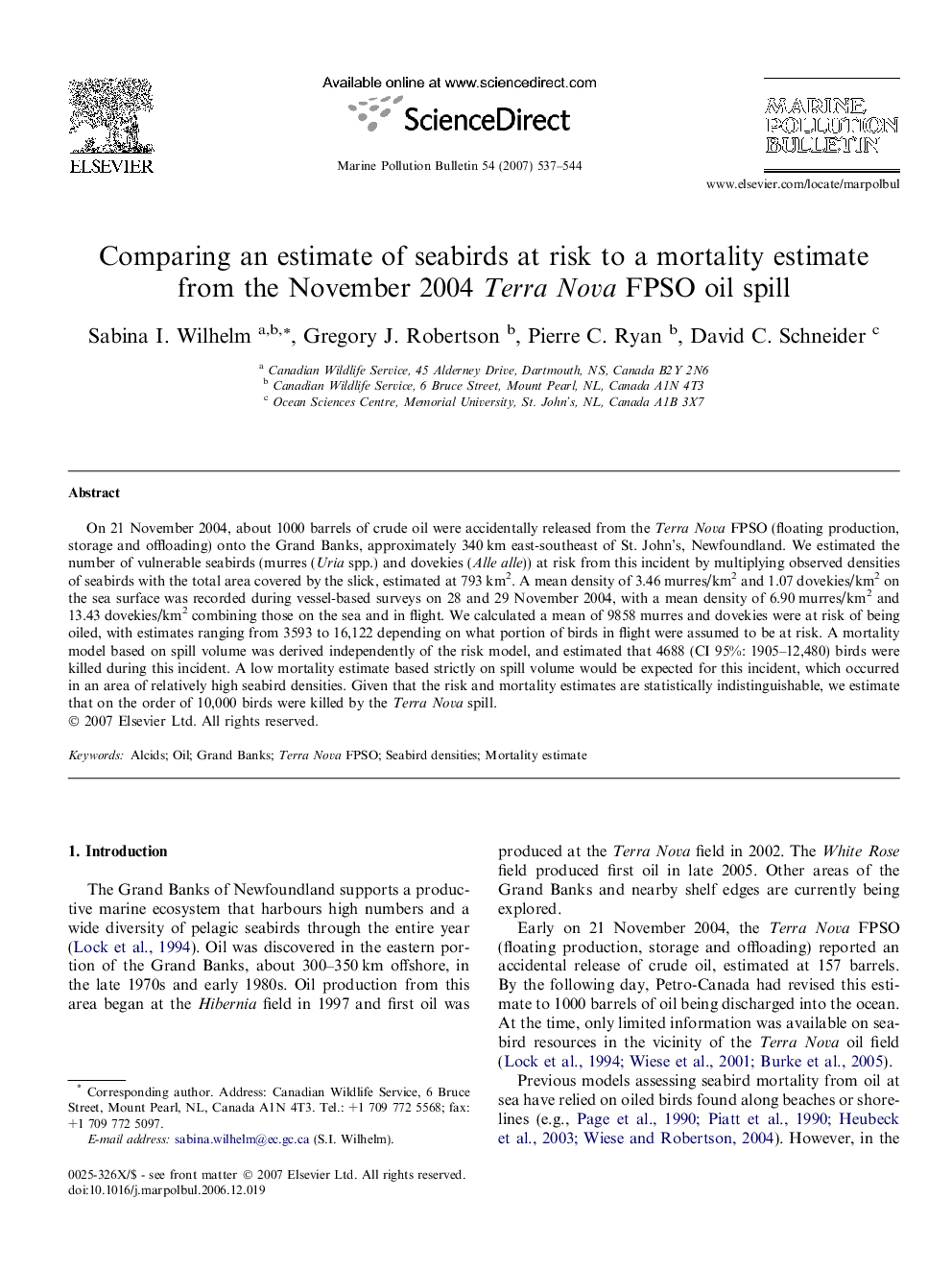| Article ID | Journal | Published Year | Pages | File Type |
|---|---|---|---|---|
| 4477561 | Marine Pollution Bulletin | 2007 | 8 Pages |
On 21 November 2004, about 1000 barrels of crude oil were accidentally released from the Terra Nova FPSO (floating production, storage and offloading) onto the Grand Banks, approximately 340 km east-southeast of St. John’s, Newfoundland. We estimated the number of vulnerable seabirds (murres (Uria spp.) and dovekies (Alle alle)) at risk from this incident by multiplying observed densities of seabirds with the total area covered by the slick, estimated at 793 km2. A mean density of 3.46 murres/km2 and 1.07 dovekies/km2 on the sea surface was recorded during vessel-based surveys on 28 and 29 November 2004, with a mean density of 6.90 murres/km2 and 13.43 dovekies/km2 combining those on the sea and in flight. We calculated a mean of 9858 murres and dovekies were at risk of being oiled, with estimates ranging from 3593 to 16,122 depending on what portion of birds in flight were assumed to be at risk. A mortality model based on spill volume was derived independently of the risk model, and estimated that 4688 (CI 95%: 1905–12,480) birds were killed during this incident. A low mortality estimate based strictly on spill volume would be expected for this incident, which occurred in an area of relatively high seabird densities. Given that the risk and mortality estimates are statistically indistinguishable, we estimate that on the order of 10,000 birds were killed by the Terra Nova spill.
